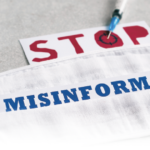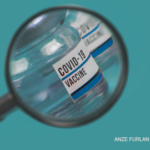When the team analyzed the July case rates according to the month in which workers with COVID-19 completed their vaccination series, they found the attack rate for the unvaccinated was higher than that of the vaccinated. The July attack rate among unvaccinated persons was 16.4 per 1,000 persons (95% confidence interval [CI], 11.8 to 22.9). In workers completing vaccination in January or February, the attack rate was 6.7 per 1,000 persons (95% CI, 5.9 to 7.8). This finding stood in contrast to the attack rate of 3.7 per 1,000 persons (95% CI, 2.5 to 5.7) among those who completed vaccination during the period from March through May. Thus, although the vaccination was providing protection against severe disease, it was more effective during the first three months post vaccination.
Dr. Torriani notes the workforce had a mean age of 37 years and the study encompassed “a young cohort of healthcare workers who are quite healthy.” Both vaccinated and unvaccinated workers had symptoms, 83.8% and 88.9%, respectively, but Dr. Torriani reports that when the vaccinated individuals did get sick, they experienced very mild disease.
“Disease means that people have to stay home and isolate and not go to work,” Dr. Torriani says. Because of this protocol, the wave of infection put a strain on the healthcare system even though individuals were not particularly ill.
“We’re not worried about severe disease, but we worried about infectious disease in general,” says Dr. Torriani. Thus, she was disappointed when, at their September 2021 meeting, the Advisory Committee on Immunization Practices (ACIP) recommended against booster vaccination for persons with frequent occupational or institutional exposure to SARS-CoV-2.2
However, Dr. Torriani was grateful when director of the U.S. Centers for Disease Control & Prevention (CDC), Rochelle Walensky, MD, MPH, overruled the ACIP recommendation, enabling healthcare workers to receive a booster dose based on their individual benefits and risks. As justification for her decision, Dr. Walensky cited the implications of waning immunity against infection in healthcare personnel and other frontline workers.
Dr. Torriani says she is pleased by “the current push toward simplifying the criteria for boosters by opening boosters to all adults.”3
Lara C. Pullen, PhD, is a medical writer based in the Chicago area.
References
- Keehner J, Horton LE, Bikin NJ, et al. Resurgence of SARS-CoV-2 infection in a highly vaccinated health system workforce. N Engl J Med. 2021 Sep 30;385(14):1330–1332.
- Mbaeyi S, Oliver SE, Collins JP, et al. The Advisory Committee on Immunization Practices’ interim recommendations for additional primary and booster doses of COVID-19 vaccines—United States. MMWR Morb Mortal Wkly Rep. 2021 Nov. 5;70(44);1545–1552.



